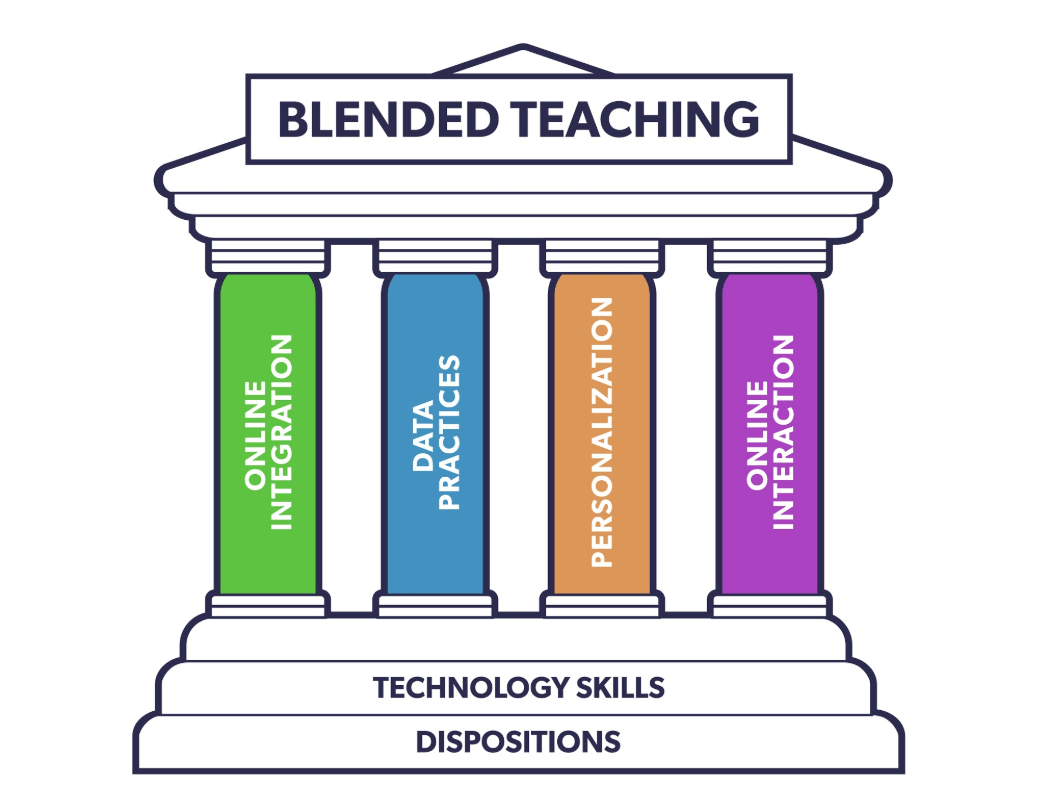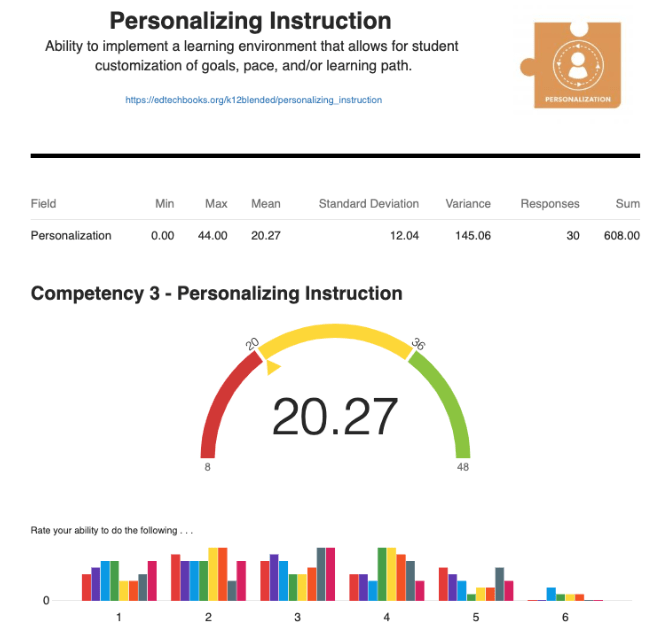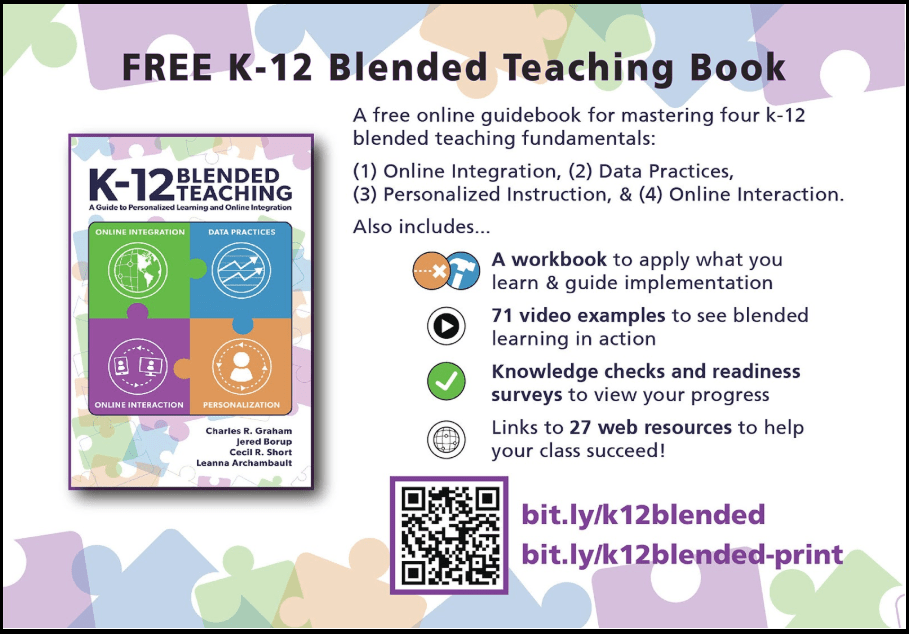4 skills essential for effective blended teaching
July 16, 2019 |
July 16, 2019 |
 By Charles R. Graham, Jered Borup, Leanna Archambault, Cecil R. Short
By Charles R. Graham, Jered Borup, Leanna Archambault, Cecil R. Short
Our research team, comprised of researchers from Brigham Young University, George Mason University, and Arizona State University, has spent the past several years exploring a timely question: What skills are needed to be an effective teacher in a blended classroom? The exploration began in earnest about 5 years ago after the Utah State Board of Education updated its teacher licensure rules to mandate that university programs “include coursework specifically designed to prepare teachers…to facilitate student use of software for personalized learning [and] to teach effectively in traditional, online-only, and blended classrooms.”
With limited space in an already heavy college curriculum for pre-service teachers, we wondered what competencies would be the most critical for teacher preparation programs.
Similarly, a large school district requested that we identify the teaching competencies that they should focus on as they implemented a district-wide blended learning initiative. With limited professional development dollars and teacher development time, many school districts are struggling to identify how to help teachers effectively and efficiently prepare for a shift to blended teaching.
Educators across the country are interested in knowing how they can get the biggest return on time invested when focusing on blended teaching training. Our evolving research has led to the discovery of four core, blended teaching competencies and a guide to help educators continue honing those skills.
An extensive literature search led by a doctoral student, Emily Pulham, identified as many existing K-12 online and blended teaching competency frameworks as possible and analyzed them for common themes. There were some similarities between online teaching and blended teaching: flexible and personalized pedagogy ranked as the top organizing theme for both. There were also differences. For example, a mastery-based pedagogy ranked as the second most common competency among blended teaching frameworks, but 44th in the online teaching literature. What was even more interesting was that a separate analysis of the competencies showed that well over half of the competencies were written in a way that made them generic enough to apply to any teaching modality: online, in-person, or blended.
During two years working with the Michigan Virtual Learning Research Institute and colleagues around the country, we developed a set of blended teaching competencies that focused primarily on pedagogical practices. During this time, we also worked closely with a large school district to develop a diagnostic instrument of blended teaching readiness that could be used to help individual teachers, schools, and districts efficiently identify current blended teaching skill levels as well as areas needed for additional professional development. (Here are links to our blended teaching competency model development from 2017, 2018, and 2019).
Figure 1 below represents the four core skills needed for effective blended teaching. These competencies stand on a foundation of basic technology skills and dispositions. The competencies are:
Figure 1. Four core competencies for effective blended teaching built on a foundation of technology skills and dispositions.

One of the goals of the project was to create a free diagnostic assessment that would allow individuals and institutions to know where they currently are with their blended teaching readiness so that professional development can be more personalized and focused on individual teacher needs.
The K-12 Blended Teaching Readiness survey is currently available for individual educators to explore their own blended teaching readiness in these four core areas. At the end of the survey, a personal blended teaching readiness score is provided along with video examples related to each of the blended teaching competencies.
You can access the survey online at: http://bit.ly/K12-BTR
Schools or districts can also use the survey to see patterns and needs around their faculty’s blended teaching skills, as shown in Figure 2. (Instructions for setting up a school or district report can be found here.)
Figure 2. Example page from a school’s Blended Teaching Readiness report (access sample report at http://bit.ly/BTR-example-report; use access code: btrexample)

In addition to the Blended Teaching Readiness survey, a free online book, K-12 Blended Teaching A Guide to Personalized Learning and Online Integration, was created to provide an introduction to blended teaching and each of the four core competencies. The book is a practical guide for teachers and includes frequent examples—many through videos—highlighting the blended teacher competencies in action. Each chapter also provides web resources for further support as well as knowledge checks and Readiness surveys that allow teachers to track their progress. Because the goal of the book is to help teachers design and facilitate blended instructional units, readers are provided with a workbook that guides them through the process.
Figure 3. K-12 Blended Teaching book can be freely accessed online at http://bit.ly/k12blended

Our current efforts have been directed at creating resources that are openly licensed and freely available for anyone to use. We understand that blended and personalized learning are rapidly evolving domains that are difficult to stay on top of. We would love feedback and constructive critiques that might help us better understand the limitations of the competencies outlined as well as ideas for improvements. Send your suggestions to [email protected].
Related articles:
Leave a Reply